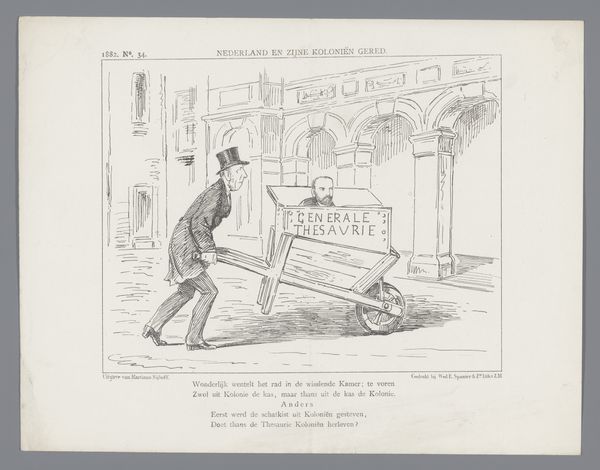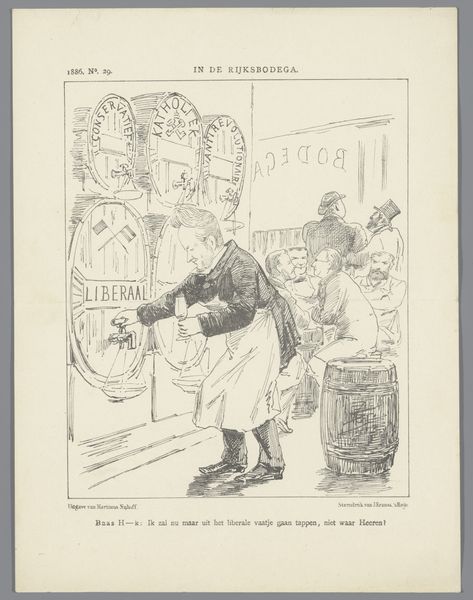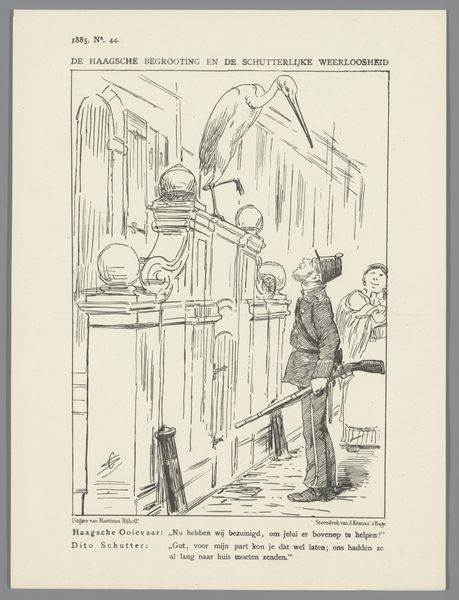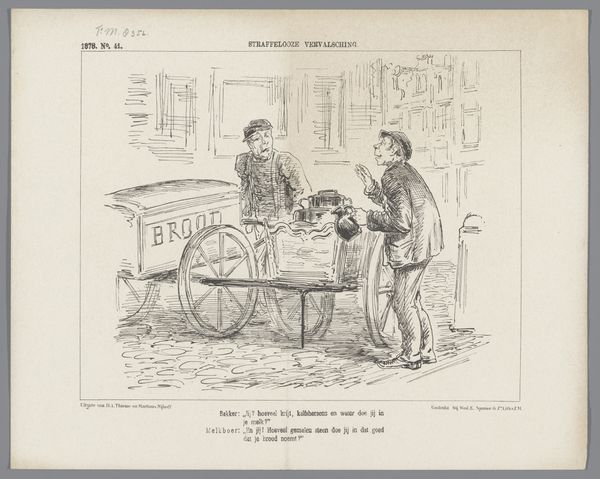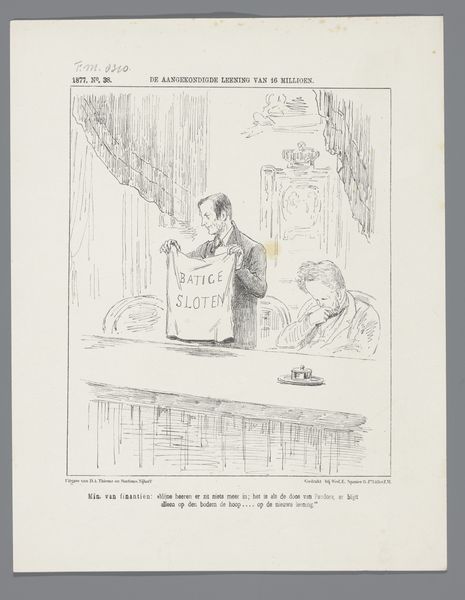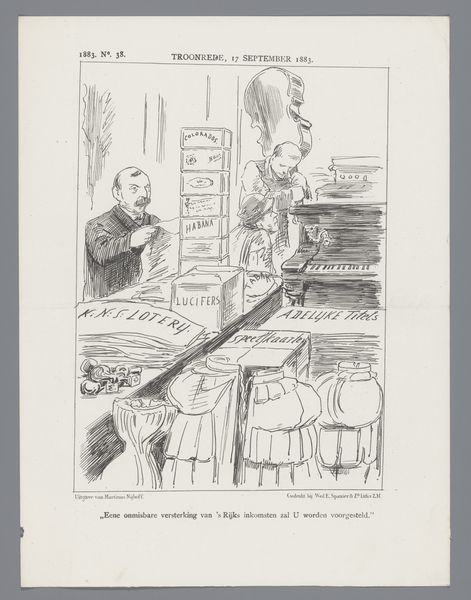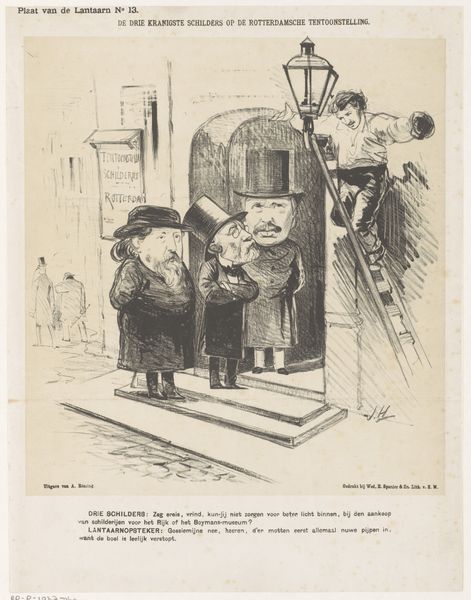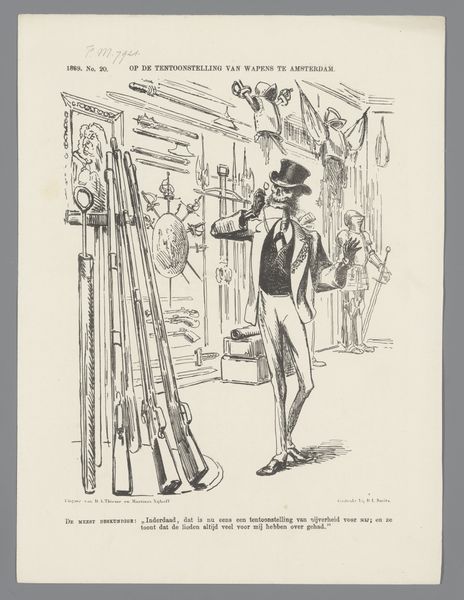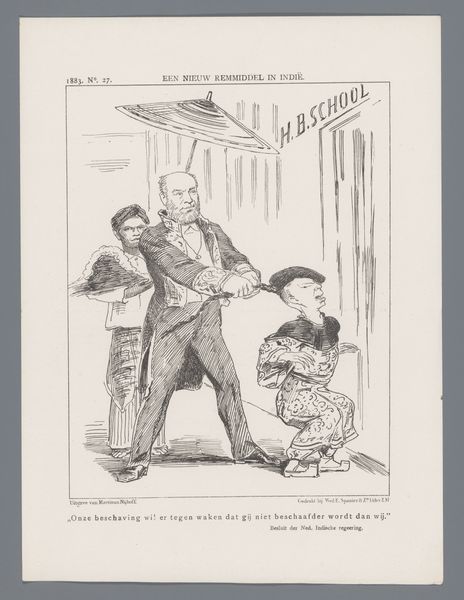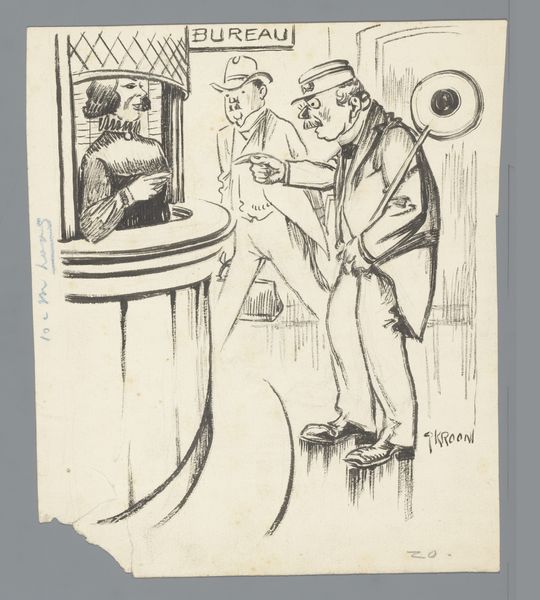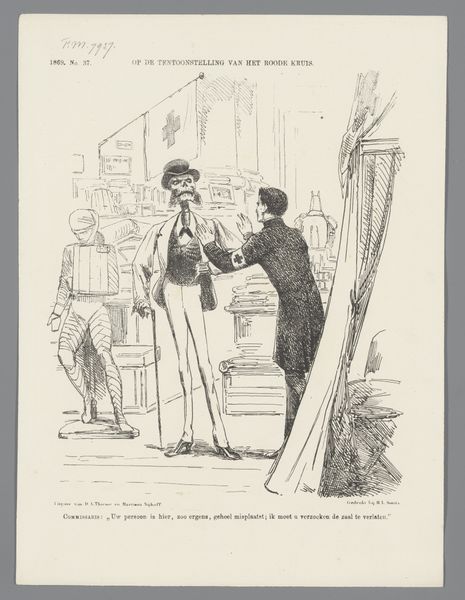
drawing, ink, pen
#
drawing
#
pen illustration
#
caricature
#
ink
#
pen
#
history-painting
Dimensions: height 275 mm, width 215 mm
Copyright: Rijks Museum: Open Domain
Johan Michaël Schmidt Crans made this print in 1885 using a technique called engraving, where lines are incised into a metal plate, inked, and then transferred to paper under great pressure. The stark monochrome aesthetic comes from the graphic nature of the engraving process itself. Look at the figure on the left, calling out to the carriage. The bold outlines and cross-hatching give the image a sense of urgency and caricature. The carriage itself is piled high with signs representing different taxes, showing the burden on the populace. This was a time of industrial expansion and shifting social structures, and prints like these were a form of political commentary, accessible to a wide audience. Prints like this one existed in a world of mass production. While the engraving itself demanded skill, it was ultimately a means to create reproducible images, speaking to the growing importance of media and its impact on social and political life. Ultimately, it’s a reminder that even seemingly simple prints can reveal complex histories of labor, politics, and consumption.
Comments
No comments
Be the first to comment and join the conversation on the ultimate creative platform.
